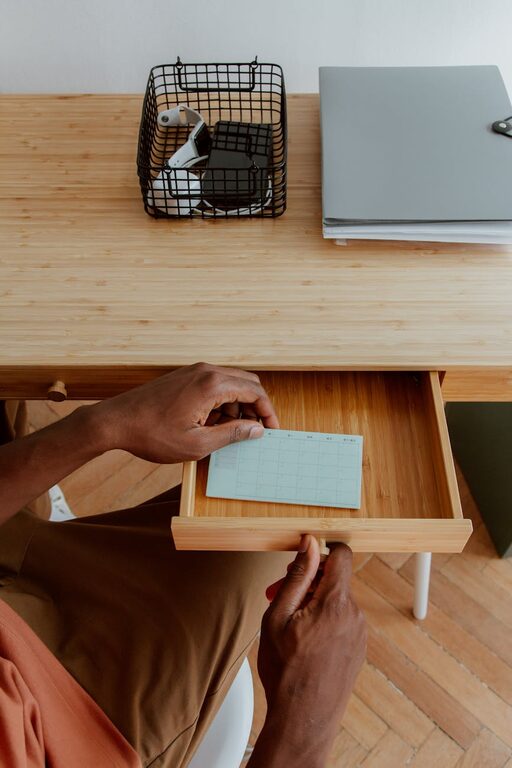
Paper clutter is a common challenge in many households. From bills and receipts to school papers and junk mail, piles of paper can quickly overwhelm your space and your peace of mind. Fortunately, reducing household paper clutter doesn’t require major effort or expensive tools. With some simple strategies, you can regain control over your paper piles and create a more organized, stress-free home.
Why Paper Clutter Happens
Before diving into solutions, it helps to understand why paper clutter builds up:
– Paper is everywhere: mail, school, work, receipts, magazines, and more.
– It often accumulates because we aren’t sure what to do with it.
– Important documents can get buried under unnecessary papers.
– Without a routine, paper tends to pile up instead of being sorted or discarded.
Knowing these reasons can motivate you to adopt habits that keep paper clutter in check.
Start with a Clear-Out
Before preventing clutter, get rid of what you don’t need.
Steps to Declutter Existing Paper
- **Gather all loose paper:** Collect all paper from counters, drawers, and shelves into one spot.
- **Sort papers into categories:** Examples include bills, receipts, school documents, warranties, and magazines.
- **Decide what to keep:** Keep only essential papers and documents required for taxes, warranties, or legal purposes.
- **Shred sensitive papers:** To protect personal information, shred bills or documents you want to discard.
- **Recycle the rest:** Recycle junk mail, outdated flyers, and unneeded documents.
This initial step creates a clean slate for your paper management system.
Create Designated Spaces for Paper
Having a home for your papers helps keep them organized and prevents random piles.
Useful Paper Storage Ideas
– Inbox tray: A simple tray or basket for incoming mail to be sorted regularly.
– File folders: Label folders by categories like “Bills,” “Receipts,” “Medical,” or “School.”
– Binders: Especially useful for managing school papers or manuals.
– Document boxes: For important papers you need but rarely access.
– Digital organizers: Scan important documents and store them online or on your computer.
Consistency in maintaining these places is key to preventing clutter buildup.
Implement a Paper Sorting Routine
Regularly addressing your papers can stop clutter before it starts.
Tips for Sorting Paper Efficiently
– Daily Brief Sort: Spend 5 minutes a day sorting mail or papers as they come in.
– Weekly Review: Dedicate time each week to file important documents and recycle what you don’t need.
– Monthly Check: Go through bills, receipts, and subscriptions to ensure everything is current.
– Set reminders: Use phone alerts or calendar notes to maintain your sorting schedule.
Developing this habit makes paper management less overwhelming over time.
Digitize When Possible
Reducing physical paper often means moving to digital formats.
Ways to Go Paperless
– Opt for electronic bills and statements: Most companies offer paperless billing options.
– Scan receipts and important documents: Use smartphone apps to digitize and organize.
– Save and backup digital copies: Use cloud storage or external drives for safekeeping.
– Use digital note-taking apps: Replace paper notes with apps like Evernote or OneNote.
Digital files are easier to search, store, and share without taking up physical space.
Reduce Incoming Paper
Limiting the amount of paper coming into your home helps prevent clutter.
How to Reduce Incoming Paper
– Unsubscribe from junk mail: Use services or contact senders directly to remove your address.
– Choose paperless billing and statements: As mentioned, shift to email notifications.
– Think before printing: Only print when absolutely necessary.
– Use online communication: Opt for digital invitations, newsletters, and notices.
A proactive approach means less to manage on the front end.
Involve the Whole Family
Paper clutter affects everyone living in the home.
Family Tips for Paper Management
– Assign responsibilities: Have each family member organize their own papers.
– Create a shared inbox: A place everyone understands and uses.
– Teach children about sorting: Help kids learn to manage school papers.
– Celebrate progress: Praise everyone for maintaining an organized space.
Teamwork makes keeping paper clutter down easier and more enjoyable.
Maintain Minimalism with Paper
Minimalism is about keeping only what you truly need.
Minimalist Paper Habits
– Question the need to keep everything.
– Regularly purge outdated or unnecessary papers.
– Keep only the most meaningful documents and memories.
– Use smaller, simpler storage solutions to encourage regular reviews.
By embracing minimalism, you keep paper clutter from returning.
Final Thoughts
Reducing household paper clutter is achievable with simple, consistent steps. Start by clearing out what you don’t need, establish designated storage, create routines, digitize documents, and reduce incoming paper. With these strategies, your home will feel more organized and less stressful, giving you more time to enjoy the things that matter most.
Remember, the key is consistency and developing habits that fit your lifestyle. Start small, stay patient, and watch your paper clutter disappear!
